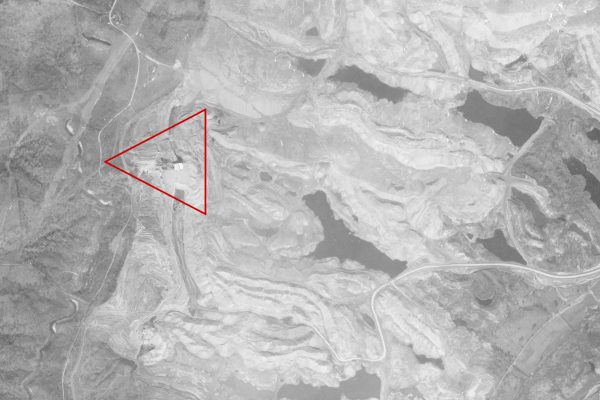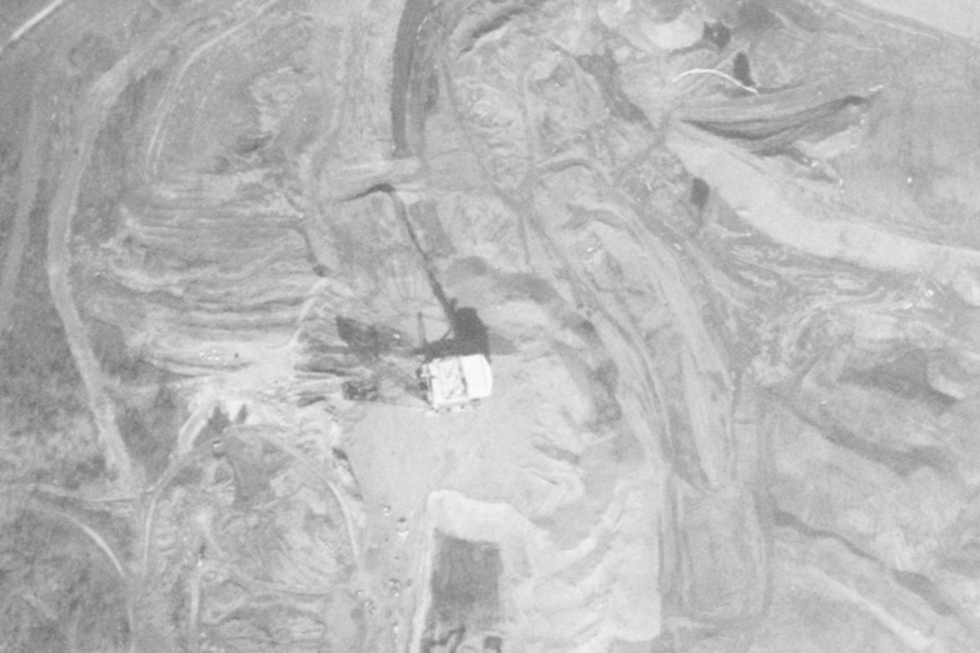Imagery released Thursday to Y-City News reveals the stunning capabilities of spy satellites that once flew overhead.
In a never-before-seen now-declassified photo, the Big Muskie, the world’s largest dragline coal mining excavator, which stood nearly 22 stories tall, can be seen in pristine detail, captured from a satellite moving rapidly through space, nearly 100 miles above Earth.
The image represents one of the few film strips that will ever be seen by the public of the local area, providing a look back in time at the military’s high-tech capabilities roughly half-a-century ago.
During the First Cold War, America needed a way to monitor activities in and around the world. The Soviet Union had closed cities that made human intelligence nearly impossible and unlike their counterpart American cities, which remain unknown still to this day and able to be freely visited, the only way to monitor top secret projects a continent away was to fly a plane over, which presented significant obstacles.
Using captured Nazi scientists and the unrivaled intellect of American engineers, a plan was set forth to launch satellites into space to capture the world. Highly sophisticated cameras were built to expose miles upon miles of film that would be jettisoned back to Earth, captured by a plane in mid-air, and then analyzed by various entities for actionable intelligence.
The technology is credited with preventing a nuclear war, exposing the Bomber Gap as a fallacy and bringing attention to other soviet projects and operations that remain closely held state secrets, still not known to the general public to this very day.
Seeing both the historic and environmental resourcefulness of the imagery, by executive order in 1995, President Bill Clinton started the first declassification of the earliest spy satellite film. Those images, however, were of a resolution that made identifying objects on the ground troublesome, they may have been able to make out an airport, for example, but identifying an individual house or car would be unlikely.
In the following decades, additional programs were declassified, which offered much better resolutions. One of those was KH-9 Hexagon, part of the larger KeyHole series of satellites. It bolstered resolutions of roughly two feet, which is of a high enough quality to count the number of cars in a parking lot in most instances.
After many requests, conversations and discussions, Thursday Y-City News received the only local imagery that is available from that program era.
On March 12, 1973, KH9-5, which was launched just a few days prior aboard a Titan IIID Rocket, flew from a north-south orbit over Muskingum County, it captured the local area in breathtaking detail, considering it was roughly 100 miles above Earth and moving faster than a plane, using film – which would be deorbited and captured by a plane – to ultimately display what it observed.
Most film captured above the Continental United States was used either for satellite testing purposes or to provide a worldwide base layer for analysis purposes. The program’s primary goal was to scan the world, capturing it for further analysis. The Soviets, which had a similar, yet far less capable program, and the Americans have credited satellite imagery for preventing a nuclear war and allowing both sides to know what the other was doing.
The Big Muskie, a coal mining dragline excavator, is of an adequate size that it would be distinguishable by the KH-9 satellite with its two-foot ground resolution. It also, like the Y-Bridge, is an identifiable landmark known around the world.

Operated from 1969 to 1991 by the Central Ohio Coal Company, the behemoth of a machine also powered much of the state by providing much-needed coal for its various powerplants, keeping the lights on and business running, which allowed in-part, Ohio to assist America in defeating the Soviets during the First Cold War.
Using additional imagery that Y-City News was provided but is not releasing at this time, we were able to pinpoint where the Big Muskie was on March 12, 1973. It was just southeast of the Mt Zion Cemetery, near Ohio Power Pond Number Four, west of The Lodge at The Wilds.
Unfortunately, the Big Muskie was lost to history, scrapped on-site and sold for less than a million dollars. The bucket, however, was saved and resides at Jesse Owens State Park in Morgan County. It’s quite a sight to behold and can be found at 4470 State Route 78, McConnelsville, Ohio. Make sure to bring a camera, you’ll want to take pictures.




